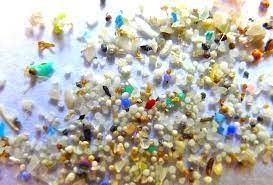Technology
Study reveals presence of microbeads in cosmetic products in India

New Delhi, March 24 : A large number of personal care cosmetic products (PCCPs) in India contain harmful micro-plastics and the micro-beads released from items of daily use, pose a serious threat to the environment, particularly the marine ecosystem, a new study released on Thursday said.
Micro-beads are solid primary micro-plastics with a diameter of less than 5 mm that are used in cosmetics products as 'rinse-off' or 'leave-on' for skin exfoliation, decorative purpose, cleansing, opacity and viscosity control, and so on.
Based on the assessment of 35 PCCPs, the study titled 'Dirty Cleanser: Assessment of Microplastics in Cosmetics' by Delhi-based NGO Toxics Link has shown that a total of 19 face washes, seven facial scrubs and nine body washes were tested as part of this study and out of 35 samples, 20 were detected with the presence of polymers.
Among the 20 samples with polymers, 14 have micro-plastics beads. Among all types of PCCPs tested, the highest number of micro-plastics beads was detected in Neutrogena Deep Clean Scrub with 17,250 micro-beads per 20g, followed by VLCC Natural Sciences Rose Face Scrub with 5,510 beads per 20g and Fiama Shower Gel with 4,727 micro-beads per 20g, the study by Toxics Link, an environmental research and advocacy organisation, said.
A total of 70 per cent of scrubs, 55 per cent of body washes and 21 per cent of face washes were found to have micro-beads. For the study, 20g of each of the 35 samples was taken for analysis, and FTIR was used for the identification of plastic particles in PCCPs.
"It is shocking to find plastic micro-beads in products from such large national and international brands. Many of these brands have stopped putting micro-beads in their products in other countries but continue to use them in India as we do not have outright ban on its usage," said Chief Coordinator at Toxics Link, Priti Mahesh.
Micro-plastic pollution is one of the most crucial environmental issues in recent times. The size of micro-beads detected in the products, tested in this study, was in the range of 32.55-130.92 micron. They are flushed down the drain after use and end up in Wastewater Treatment Plants (WWTPs), where they can escape into bodies of water.
"There is no efficient way of recovery once it has been disposed of, and because of non-biodegradability, it continues to persist in the environment. Micro-beads used in cosmetics are responsible for a significant proportion of the human-made solid waste in the aquatic environment and impacts marine life," said Amit, Programme coordinator, Toxics Link.
The testing was done at National Institute of Oceanography, Goa.
"There is a need for responsible consumer behaviour and ethical buying, which brings us back to the question of manufacturers' responsibility in correct product labelling and also the push for use of environment-friendly alternatives," said Satish Sinha, Associate Director, Toxics Link.



































